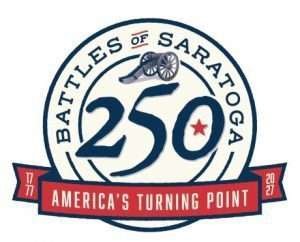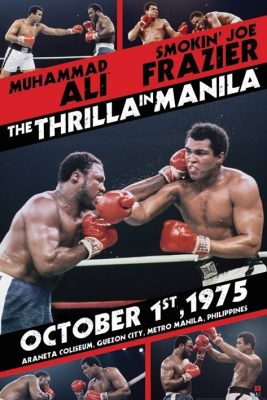
There are multiple ways through which one can approach the American Revolution. In this blog. I wish to address the sense of place in contrast to the ivory tower. The sense of place approach draws on the fact that we are physical beings with a sense of touch. Being connected to the land, a community, and place in history is important. If you ever have as seen a person make an effort to take a picture of history marker all by itself, then you know what I mean.
Whereas sense of place programs are based on the place where it happened, the ivory tower program is not. It does not even need to be in-person except for the fact that we are physical beings and the need to be in contact with other people is essential to who we are. That being said, an ivory tower conference can be anywhere. Think of how many conferences on peoples from around the world and in ancient times can be held at a location far removed from where those people live or lived. American Revolution conferences frequently are held in Boston, New York, and Philadelphia because of their role in the American Revolution and they have colleges and historical organizations without attendees visiting a fort or a battlefield.
In this blog, I wish to cover three current sense of place programs and one ivory tower program:
1. Fort Plain Museum American Revolution Conference in the Mohawk Valley last month which I did attend
2. Fort Ticonderoga Seminar on the American Revolution in September which I am planning to attend
3. Battle of Saratoga “America’s Turning Point,” the new 250th commission created by Saratoga County about a battlefield where I have had multiple teacher programs in the past
4. Unrepresented Voices of the American Revolution, an ivory tower conference in Boston which I was unable to attend and which was not on-line.
FORT PLAIN MUSEUM CONFERENCE
For this conference, I am going to draw on the conference report written by Nancy Spannaus of the Alexander Hamilton Awareness Society. I met her at the conference and did not know she would be writing a ten-page summary of the presentations. Wouldn’t it be great if someone did that at all history conferences? To read her report click here.
The conference did tend to focus on the military and the bus tour was to sites where American Revolution battles were fought. Although the Oneida, America’s first ally, and the Seneca were involved in these battles no presenters were from these or any Haudenosaunee people. There will be a conference this fall on William Johnson.
The conference is an extraordinary event. In boxing terms, Norm Bollen and Brian Mack of the Fort Plain Museum are punching above their weight. In addition to creating this annual conference and tour off the beaten trail, they have successfully created on-line book store focusing on the American Revolution. They have ambitious plans for expanding the museum and are dedicated to bringing tourists into a part of the Mohawk Valley people tend to drive through without stopping. They deserve a great deal of credit for what they have been able to accomplish. One hopes that if the National Commission gets it acts together and if there is a viable New York State commission and if there is real funding including for events after 1776, they will get the institutional support they deserve. The small communities would benefit enormously from increased tourist visitation.
In the meantime, the conference organizers plan on following the timeline. Each year’s conference from this point forward will focus on the events of that year 250 years ago. I have suggested that approach in a couple of blogs and of the need for national history organizations to help show the way but so far to no avail.
FORT TICONDEROGA CONFERENCE
Fort Ticonderoga is holding its 18th American Revolution Conference this September (they prefer the term “seminar”). The fort itself recently passed its own bicentennial as a non-fort site when William Ferris Pell purchased it in 1820. In olden days, I attended conferences there in a giant (heated) tent. I then watched the construction/archaeological excavation of what is now the Mars Education Center, a sign of the money that has been behind some of the changes with more to come.
The conference this year is overwhelming military. There are sessions about tactical prowess, raids, armed camps, and imperialism. Women are present but in a military context:
“Jane McCrea, Women and War: Gender and Violence in the Revolution’s Northern Front”
“The Infamous Conduct of a few Abandoned Miscreants”: Sexual Violence committed by Continental Soldiers towards American Women.
Fort Ticonderoga does conduct battle re-enactments. For example, this weekend:
Battle Reenactment: 1759 Siege of Carillon
Don’t miss the epic two-day 1759 Siege of Carillon Battle Reenactment, July 23-24, as Fort Ticonderoga recreates this dramatic 1759 battle for the first time since 2011! Through a combination of demonstrations, vignettes, and battle reenactments, visitors will experience the British advance for Lake George, pushing through stiff French resistance to gain a foothold upon the previous year’s battlefield, overlooking the French-held fort. Become immersed in this 18th-century siege; featuring the constant roar of cannon, beginning on the actual day French guns began firing from Fort Carillon in 1759.
Each day tells a different story as visitors see the burning fuse of the Fort’s destruction, the final French sortie at the British lines, and evacuation by water in an action packed Sunday.
A sense of place is very much a part of the American Revolution and French and Indian War programs at Fort Ticonderoga.
SARATOGA
Saratoga is different from Forts Plain and Ticonderoga in that it is a battlefield and not a fort. In fact it isn’t even in Saratoga today. In the past IHARE has had weekend Teacherhostels/Historyhostels at the location as well as including it as part of a more extended program on Forts of the Empire State. Outside the town visitor center there was/is a statue to Solomon Northup but back then his name did not mean anything to me.
The IHARE program combined talks on the Battle of Saratoga and its place in the American Revolution. Then we would walk (and drive) the grounds of the battlefield itself. I ended with a canal/river cruise not because it was directly related to the American Revolution but because it was a nice way to end the program. We disembarked from Schuylerville after visiting the NPS Schuyler House and climbing the Arnold-less Victory Monument.
As best I recall, The National Park Service did not have an annual Battle of Saratoga conference comparable to those at Forts Plain and Ticonderoga.
However, things may be changing for the American Revolution 250th. The County has just launched a program called “America’s Turning Point” in recognition of the battle there.
Never before in world history had a British Army surrendered until October 17, 1777 when General John Burgoyne and his army, cold, starving, and battered from their defeat at the Battle of Bemis Heights, surrendered to General Gates and his Patriot army at Saratoga in what is now known as the Turning Point of the American Revolution.
As part of the effort, the County has created an appropriately numbered commission of 13 people. The Commission will be responsible for making it happen. Members include the County Historian Lauren Roberts – Yes, Saratoga County is one of the New York State counties with an historian! Various other representatives from the history community are included on the Commission. Politicians are not ignored either: Town of Saratoga Supervisor, Town of Stillwater Supervisor where the battlefield is located, Saratoga County Administrator and the Chairman of the Saratoga County Board of Supervisors. I hope one of the remaining two openings will be filled by a teacher or someone from a school system.
The Commission launches its public face this July 19th through 24th with a tent at the Saratoga County Fair. There will be a parade August 7th in Schuylerville and a living history teacher workshop October 28th. To support this effort, the Saratoga County Board of Supervisors committed $150,000. This is in one county! Clearly Saratoga is hitting the ground running now in 2022 and not waiting for the state or federal government to get their acts together.
Massachusetts Historical Society: Underrepresented Voices of the American Revolution (July 14-15, 2022)
The lead up to the 250th anniversary of the Declaration of Independence offers an opportunity to highlight the latest scholarship on underrepresented voices of the American Revolution. This conference will bring together scholars to explore the broad themes associated with those not traditionally considered in discussing the American Revolutionary Era. Additionally, this conference will serve both scholars and K-12 educators by providing a platform to consider how the classroom serves as a key site of historical representation. Teachers will be invited to attend the traditional academic sessions, and scholars in turn will be invited to participate in a concluding teacher workshop at the end of the conference (July 16).
As the title of the conference suggests, this conference by America’s oldest historical society is not one based on a sense of place. It is an intellectual conference intending to give voice to those voices not traditionally heard. I was unable to attend the conference in Boston in-person and it was not on-line. The settings for the conference were an historical society and college in Boston, a quite different setting from the forts and battlefields in the New York State programs.
The panel sessions attest the fulfillment of the vision stated above. It includes sessions I would have like to have attended and I don’t know if any of the presentations will be available to non-attendees. The Massachusetts Historical Society does have a robust schedule of programs on an ongoing basis and does an excellent job of making the recordings available on line.
To illustrate the focus of conference, here are the non-military sessions:
1. Underrepresented Voices in the Archives
2. New Perspective on Loyalism – there will be a NYC Loyalist militia presentation at Fort Ticonderoga
3. The Non-Human Revolution
4. Gendered Loyalties
5. Imperial Borderlands – there will be a borderlands presentation at Fort Ticonderoga
6. Southern Revolution Worlds – it is not about white people
7. Claiming Exodus: Jews, Black Protestants, and Revolutionary Religious Freedom
8. Indian Sovereignty and the Revolution – earlier this week I participated in a two-day NMAI webinar specifically on the subject of Indian Sovereignty but not on the Revolution
9. Reconsidering Revolutionary New England.
If the schedule had been different or the Boston conference was available online, I would have attended both the sense of place and ivory tower American Revolution events. I wonder how many other people would have attended both. We may have a “failure to communicate” here. During the 250th, it is easy to imagine a slew of silo events and programs speaking to separate audiences who do not interact. One group will not be current with scholarship and the other will ignore the fact that a real war was fought at real places that can be visited today.






